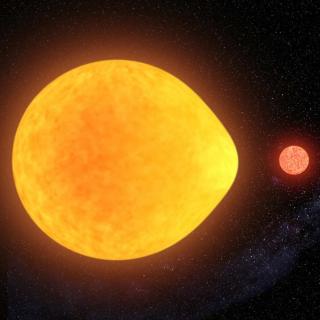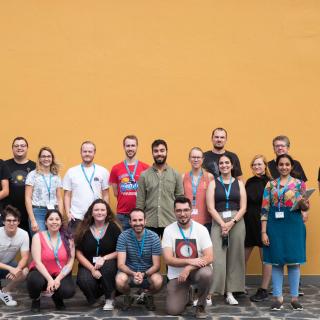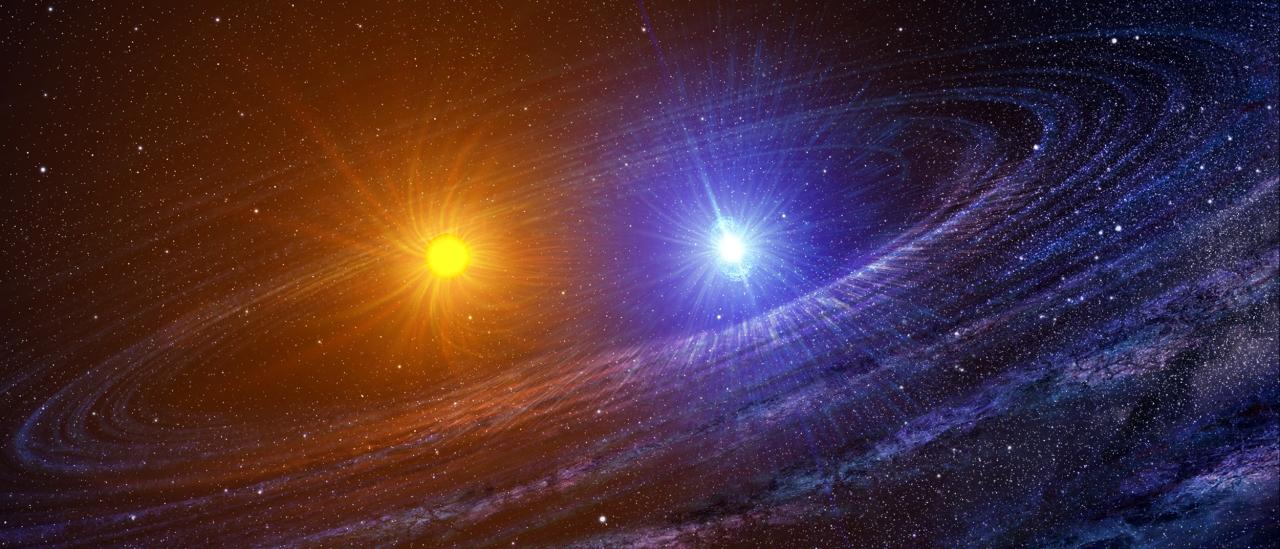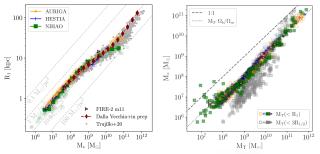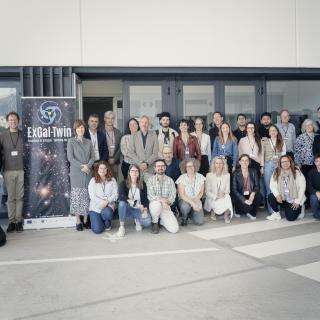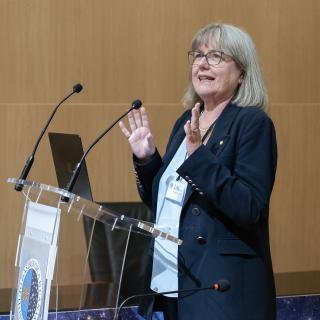Research led by the Instituto de Astrofísica de Canarias (IAC) has discovered that, in binary systems, stars that evolve into red giants change the way they rotate with their companions, making their orbits more circular. The result was achieved after studying nearly 1000 solar-like oscillating stars in binary systems, the greatest yield to date of such objects. For their identification, the third Gaia Data Release (Gaia-DR3) and NASA Kepler and TESS catalogs have been explored. The study has been published in the journal Astronomy and Astrophysics and has been selected as the most recent European Space Agency (ESA) Gaia Image of the Week.
Binary stars, systems comprising two stars that are gravitationally bound, are treasure troves for stellar astrophysics. The two stars in the system were born together from the same interstellar cloud and, therefore, have the same age, chemical composition, and distance. This means that we can derive their fundamental properties, such as the mass and age, with high certainty and test our knowledge of stellar physics. Studying the star-star interactions in such systems is another aspect of astrophysics that helps us better understand the interaction of planets and their host star.
A powerful technique for studying the stars in such systems is called asteroseismology. Just as we use seismology of the Earth to better understand the inner structure of our own planet, asteroseismology allows us to infer the internal structure and dynamics of stars by studying the periodic variations in brightness caused by stellar oscillations.
If one or both system components show signs of stellar vibrations or oscillations, then a comprehensive picture of the stellar structure and evolution can be drawn from the inference of these oscillations. But finding oscillating stars like our Sun in binary systems has traditionally been like looking for a needle in a haystack. In this field, NASA's Kepler mission was the most prolific, identifying around 100 such systems.
Now, a study led by IAC researcher Paul Beck, recently published in A&A, has exploited the Gaia DR3 Binary catalog and NASA's Kepler and TESS catalogs and has identified nearly 1,000 additional solar-like oscillators in binary systems, a considerable increase in the known sample. Thanks to this new yield, the team has been able to corroborate a theory about the evolution of binary stars for which there is as yet no observational evidence.
Less eccentric dances
When stars like the Sun age, they are subject to dramatic changes. Once the Sun has exhausted its core hydrogen, it will turn into a red-giant star, expanding their outer layers by tens to hundreds of times the current solar radius. Consequently, if the stars in a binary system are close enough together, these size changes will presumably affect the dance of the two stellar companions that will start to interact through tides. Over time, tides will reduce the eccentricity of the orbits of a system, making them more and more circular.
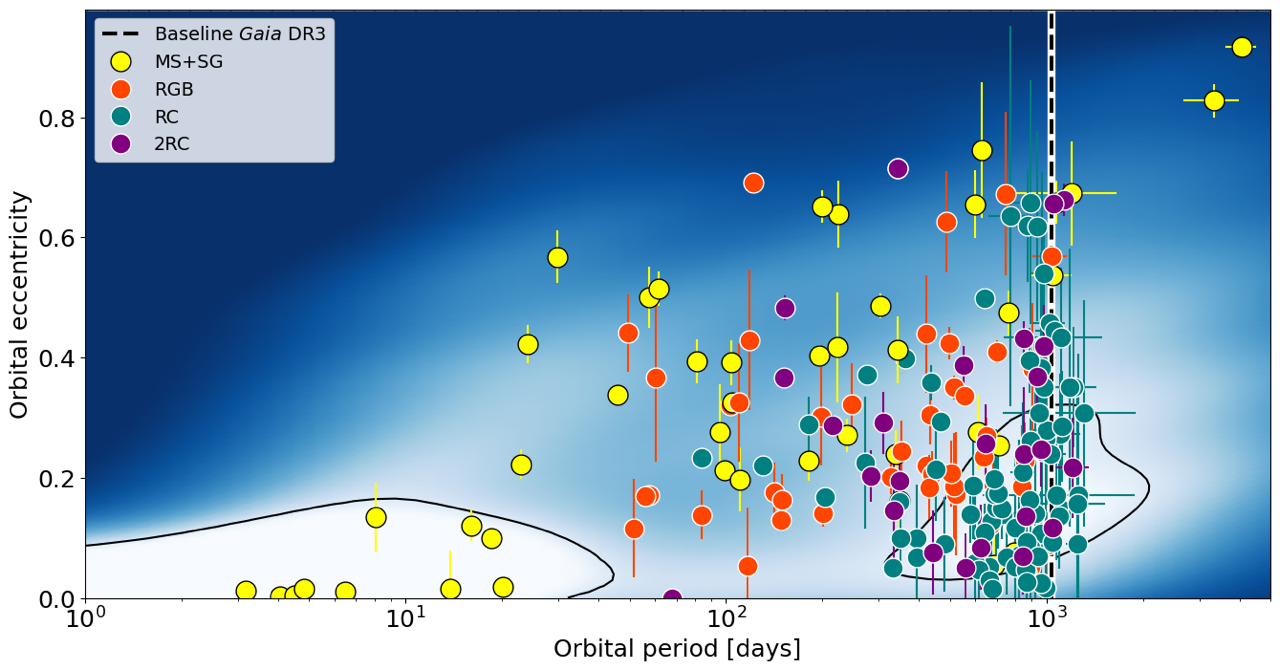
“From theory, we expect a trend to lower eccentricities with advancing stellar evolution. However, because it is difficult to separate stars in different stages of their evolution, this trend has not yet been detected observationally,” explains Beck. Using asteroseismic techniques to distinguish between less and more evolved red giants, Beck and collaborators demonstrate that, indeed, the more evolved giants are found on orbits with lower eccentricities. These are the accumulated effects of tidal interaction.
The team is optimistic about the release of the next Gaia Data Release (Gaia DR4) and ESA's future PLATO mission. PLATO will provide data to study many more oscillating stars, binary systems and exoplanet-hosting stars. “With Gaia DR4 and PLATO, even larger datasets will be established, which are essential ingredients for further studies of the co-evolution of stars and their hosting binary systems. Such a rich data set will allow us to better understand the tidal star-planet interaction in planetary systems,” concludes Beck.
Article: Beck et al. “Constraining stellar and orbital co-evolution through ensemble seismology of solar-like oscillators in binary systems -- A census of oscillating red-giants and main-sequence stars in Gaia DR3 binaries”, 2024, A&A 682, A7. DOI: https://doi.org/10.1051/0004-6361/202346810
Contact at the IAC:
Paul Beck, paul.beck [at] iac.es (paul[dot]beck[at]iac[dot]es)
[Animation] The artist’s impression illustrates the evolution of a binary system from the early phases of the red giant phase, when the red-giant star just starts to expand (left panel, red giant phase), to the more advanced phases, where the red giant already has ignited its core helium (right panel, red clump phase). Each panel shows on the left the orbits of the stellar components around the common center of gravity of the system. The right diagram shows the evolution of the radius for two stars of approximately the mass of the Sun. Credits: Animation created by Lukas Steinwender

